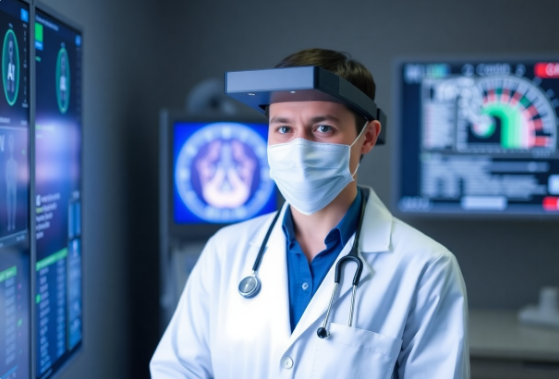Biotechnology
Technology Being Used In Gene Editing: Revolutionizing Medicine and Beyond
 Quest Lab Team
Quest Lab Team
Gene editing is at the forefront of modern biotechnology, offering unprecedented opportunities to modify DNA and address challenges in medicine, agriculture, and industry.
Understanding Gene Editing and CRISPR Technology
Gene editing involves altering the DNA sequence of an organism with precision to repair, remove, or replace genetic material. The advent of CRISPR-Cas9 has propelled this field forward, offering unparalleled accuracy and efficiency.
The Discovery of CRISPR
CRISPR, an adaptive immune system in bacteria, was discovered as a defense against viruses. Scientists adapted it into a groundbreaking tool for targeted gene modification.

How CRISPR Works
CRISPR functions like molecular scissors, guided by RNA, to locate and cut specific DNA sequences, enabling the addition, removal, or alteration of genes with incredible precision.
Applications of Gene Editing in Biomedicine
Treating Genetic Disorders
Diseases like cystic fibrosis and sickle cell anemia could be cured by correcting their genetic causes. Gene editing offers a pathway to permanent solutions for these conditions.
Cancer Therapies
CRISPR-based strategies are being developed to target cancer cells, suppress oncogenes, and enhance immune system responses.
Pioneering Medical Applications
CRISPR is reshaping approaches to disease treatment:
- Correcting genetic mutations in inherited diseases
- Engineering immune cells to combat cancer
- Developing antiviral therapies for infectious diseases
Organ Transplantation
Gene editing may create genetically compatible organs from animal or human-derived tissues, addressing donor shortages and rejection risks.
Gene Therapy
CRISPR’s precision is advancing gene therapy by enabling the replacement of malfunctioning genes with functional ones, opening new treatment avenues.
Ethical Considerations and Challenges
While the potential benefits are vast, the ethical implications of gene editing warrant careful deliberation. Questions about eugenics, safety, and unintended consequences must be addressed.
"Gene editing offers promise but also raises profound ethical questions that require global dialogue and regulation."
Addressing Off-Target Effects
Although CRISPR is highly accurate, minimizing unintended genetic alterations is a critical research focus to ensure safety.
Beyond Medicine: CRISPR in Agriculture
In agriculture, CRISPR enhances crop yields, fortifies plants against pests, and boosts nutritional content, addressing global food security challenges.
- Crop Improvements: Higher resilience to drought and diseases
- Food Security: Enhanced yields to meet global demand
Future Prospects of CRISPR
Prime and Base Editing
Emerging techniques like prime and base editing offer refined control, reducing risks and expanding the potential to treat complex genetic disorders.
CRISPR in Diagnostics
CRISPR-based diagnostic tools enable rapid disease detection, providing critical insights for early interventions.
Public Perception and Industry Growth
Effective communication of gene editing’s benefits and addressing misconceptions are essential for fostering public trust and acceptance.
- Biotech Companies: Leading innovations and treatments
- Investment Surge: Increased funding fueling research
Technological Integration in Gene Editing
AI and Machine Learning in Gene Editing
Artificial Intelligence (AI) and Machine Learning (ML) are driving advancements in gene editing by optimizing guide RNA design, predicting off-target effects, and streamlining experimental workflows. For instance, AI tools like DeepCRISPR have demonstrated exceptional accuracy in predicting CRISPR-Cas9 efficiency across different genomes.
These technologies have reduced the trial-and-error aspect of genetic research, saving researchers significant time and resources. AI-driven platforms also assist in identifying novel CRISPR variants that are more efficient and safer for therapeutic applications.
High-Throughput Screening and Automation
High-throughput screening (HTS) technologies, paired with robotics, allow researchers to test thousands of CRISPR configurations in parallel. This has accelerated the identification of effective gene-editing strategies for specific diseases. Automation also facilitates reproducibility and reduces human error in complex experiments.
Companies like Inscripta and Synthego have introduced fully automated CRISPR editing platforms, enabling scientists to scale experiments from small labs to industrial-grade research facilities.
Data Management and Bioinformatics
Gene editing generates massive datasets, necessitating advanced bioinformatics tools for analysis. Platforms like Benchling and Geneious streamline the management and visualization of gene-editing projects, offering cloud-based solutions for collaborative research. These tools also ensure data integrity and compliance with global research standards.
Cloud Computing in Gene Editing Research
The integration of cloud computing into gene editing has revolutionized data storage, sharing, and processing. Scientists worldwide can collaborate on large-scale projects, accessing computational resources for genome analysis, CRISPR design, and predictive modeling without requiring in-house infrastructure.
For example, Microsoft’s Azure cloud services have been employed in genomic research to speed up computational tasks such as CRISPR screening and drug development simulations.
Gene Editing Meets the Internet of Things (IoT)
IoT devices are being used to monitor and control gene-editing experiments remotely. Smart sensors in laboratory equipment can track environmental factors like temperature and humidity, ensuring optimal conditions for CRISPR experiments. This integration not only enhances precision but also enables real-time troubleshooting.
Edge Computing in Remote Labs
Edge computing complements IoT by processing data locally on devices rather than relying on centralized systems. This approach minimizes latency and ensures real-time adjustments during sensitive gene-editing procedures.
Advances in CRISPR Delivery Systems
Nanotechnology in Gene Editing
Nanoparticles are emerging as efficient carriers for CRISPR components, delivering them directly to target cells. These nanoscale carriers, often lipid-based, protect CRISPR molecules from degradation and enhance their uptake into cells.
A recent breakthrough involves using exosome-based delivery systems, which are natural nanoparticles derived from cells, making them biocompatible and less likely to trigger immune responses.
Electroporation and Microfluidics
Microfluidic devices and electroporation techniques are being refined to improve the precision of CRISPR delivery. These methods apply electrical pulses or microfluidic channels to introduce CRISPR components into cells with minimal damage.
Microfluidics also facilitates single-cell editing, allowing researchers to study genetic modifications on a granular level, paving the way for personalized treatments.
CRISPR in Computational Biology
The synergy between computational biology and CRISPR has enabled virtual modeling of gene-editing outcomes before physical experiments. Software like CRISPResso provides detailed analysis of on-target and off-target editing, while predictive algorithms assist in selecting optimal CRISPR designs.
Digital Twins for Genome Editing
Digital twin technology, initially developed for engineering and manufacturing, is now being adapted for biological systems. These virtual replicas of biological entities allow researchers to simulate gene-editing processes, predict outcomes, and refine techniques without risking actual samples.
By integrating digital twins into CRISPR workflows, scientists can reduce experimental iterations, enhancing efficiency and precision in developing therapies.
As we embrace this transformative technology, collaborative efforts in research, regulation, and education will be vital for unlocking its full potential responsibly.

Quest Lab Writer Team
This article was made live by Quest Lab Team of writers and expertise in field of searching and exploring
rich technological content in different fields and in different areas of the modern world




